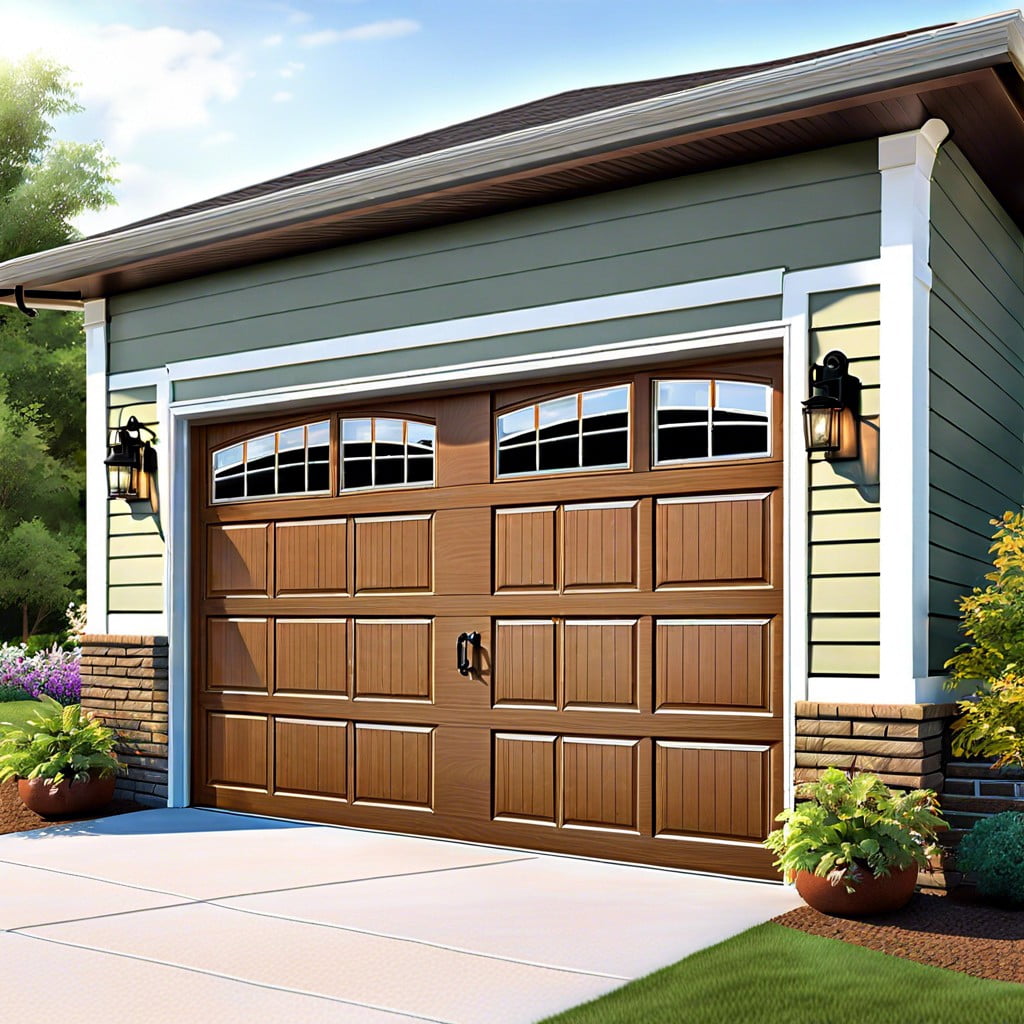This article explains the mechanics behind how a garage door operates, providing insights into the components that make the magic happen.
Key takeaways:
- Garage door is a complex system of components.
- Different types of garage door operators: chain drive, belt drive, screw drive.
- Garage door components work together to open and close the door.
- Modern garage door openers offer safety and convenience features.
- Battery backup ensures operation during power outage.
Anatomy of a Garage Door System

Every garage door is more than just a big moving wall; it’s a complex system of parts working in harmony to make your morning exit as smooth as your car’s engine. Key components include:
- Panels: These are the large sections, visible from the outside, that make up the body of the door.
- Tracks: Running along each side of the door, these guide the panels to slide up and parallel to the ceiling when the door opens.
- Springs: Mounted above the door, these help to lift the hefty weight of the panels with ease, acting like the unsung heroes of the garage door world.
- Hinges: These small but mighty parts hold the panels together, bending as the door rolls up or down.
- Rollers: Attached to the sides of the panels, these wheel into the tracks, allowing the door to glide smoothly without the need for a motorized scooter.
- Opener: The power behind the magic, this device uses a motor to drive the door up and down—say goodbye to manual lifting!
- Safety sensors: These are the watchful eyes that ensure nothing is in the way of the closing door, because no one wants a garage door to play limbo with their car.
Each component must be in good working order to avoid turning your simple garage exit into a morning puzzle of “Why won’t this door open?”
Types of Garage Door Operators
When choosing a garage door operator, consider that there are mainly three types: chain drive, belt drive, and screw drive. Chain drive operators use a metal chain to pull or push the trolley that moves the garage door up and down. They’re like the bike chain of the garage door world—affordable and reliable but can be a bit noisy, making them a perfect fit for detached garages.
Belt drive operators function similarly, but they use a rubber belt instead of a chain. They offer a quieter operation, which makes them ideal for garages attached to homes. Your ears will thank you, and so will your sleeping family members!
Screw drive operators, meanwhile, use a threaded steel rod to move the door. While these types of operators are less noisy than chain drives and require less maintenance, they are best suited for climates that maintain consistent temperatures, making them the picky eaters of the garage door operator family.
Each type has its own set of advantages, so selecting the right one depends on personal preferences such as noise tolerance, maintenance commitment, and environmental conditions.
How It All Works Together
Once the garage door components are assembled, the real magic begins. When you press the button on your remote, the signal is sent to the garage door opener. This main brain then springs into action, initiating the motor. The motor, which often thinks it’s the boss, engages the drive mechanism—either a chain, belt, or screw—that is tasked with moving the trolley. The trolley is partnered with the arm connected to the door and, like best friends, when one moves, so does the other.
The movement of the trolley along its track guides the raising or lowering of the door on its set paths. Meanwhile, the springs get into a game of tug-of-war, balancing the door’s weight to ensure smooth transitions and to prevent any dramatic, unwanted slams. Sensors at the base of the door frame act as the diligent lookouts. They keep an eye out for any objects that might obstruct the door’s path, ensuring everything is clear before giving the final nod for closure.
And there you have it—press a button, and a symphony of well-coordinated parts act in unison to open or close your garage door. Who knew garage doors could be such team players?
Top Garage Door Opener Features for Safety and Convenience
Modern garage door openers aren’t just about getting the door up and down anymore. They’ve evolved into high-tech hubs of safety and convenience. One key feature is the auto-reverse mechanism, which uses sensors to detect any object in the door’s path, instantly reversing the door to prevent accidents. Another convenience is the use of rolling codes, which change the opener’s access code each time it’s used, keeping out unwanted guests and providing peace of mind.
For those who despise carrying house keys, keyless entry pads mounted outside the garage offer secure, code-based access. And for the tech-savvy, smart garage door openers connect to home Wi-Fi, allowing homeowners to control the door from anywhere through a smartphone app. This feature is particularly handy if you’ve ever left home wondering if you closed the garage door. Last, but not least, battery backup systems ensure your garage door can operate even when the power goes out, because who wants to manually lift that heavy door after a tiring day?